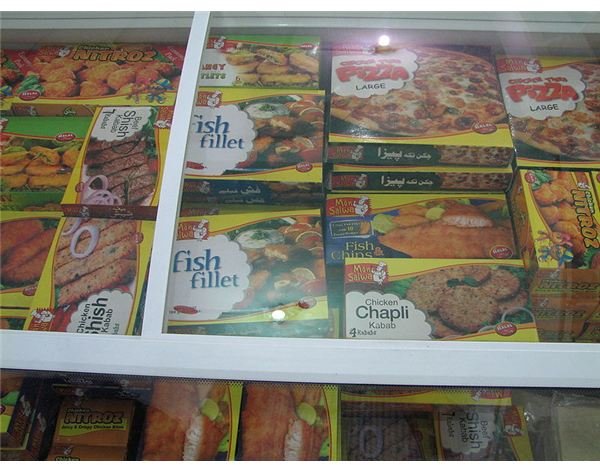Basic Food Safety Tips for Travelers - Part 1 of 2
A big danger when traveling is consumption of foods contaminated with harmful bacteria. The serious effects of such microorganisms include intestinal distress leading to food poisoning or traveler’s tummy.
Eating freshly cooked food, keeping raw and cooked food separate, using safe food sources, storing food at correct temperatures, and washing are basic food safety tips for travelers to prevent such infection.
Consumption of Freshly Cooked Food
Travelers need to cook their food thoroughly in high flames, and consume food fresh and hot.
The danger with raw food, uncooked food, and undercooked food is the presence of dangerous microorganisms such as campylobacter, staphylococcus aureus, salmonella, bacillus cereus, escherichia coli, hepatitis A virus, rotavirus, and other toxic substances. Temperatures above 70 degrees Celsius and below zero degrees Celsius destroy such microorganisms.
The foods most vulnerable to dangerous microorganisms include:
- seafood
- unpasteurized milk and other diary products such as cheese, and yogurt
- poultry whose meat is still red
- minced meat found in burgers
- eggs, which are especially susceptible to the salmonella virus
Such foods acquire contamination from a wide variety of sources, and the traveler’s diet needs to ensure such foods are never consumed raw, uncooked, undercooked, or rare.
Image Credit: flickr.com/catsper
Separating Raw and Cooked Foods
While freshly cooked food remains free of harmful microorganisms, raw food containing harmful microorganisms can contaminate it. The most important traveler’s food safety tip is, therefore, keeping cooked food and raw foods separate.
Travelers need to:
- make sure the food at restaurants is not a combination of cooked food and raw food
- limit consumption of raw food to fruits and vegetables with a peel or shell. The microorganism contamination goes away with the peel
- avoid eating dishes containing raw or undercooked eggs, such as home-made mayonnaise, some sauces, mousses, and other desserts
Using Safe Food Sources and Water
Much of the food contamination occurs with the use of contaminated ingredients. Foods most susceptible to such contamination are ice cream, ice cubes, drinking water, milk, and other diary products.
Food safety tips for travelers in this regards include:
- avoiding fruits and vegetables with damaged skins or shells, as toxic chemicals form in such damaged areas and contamination seeps inside
- avoiding salads of green lefty vegetables. Though normally a nutritious food source, green leafy vegetables are especially susceptible to contamination
- making sure the seal in bottled drinking water is not tampered with or broken
- avoiding drinking water from doubtful sources. Micropore filtering and iodine tablets are alternatives to purchasing bottled water.
- opting for packed beverages or hot beverages such as tea when safe drinking water is not available
On the next page, we’ll look at the importance of food storage temperatures, and washing as ways of ensuring food safety for travelers. We will also look at an alternative approach to eat safe when traveling.
Storage Temperatures

Heating, though effectively negating the potential of the microorganisms to do harm, does not completely eradicate bacteria from the food. Microorganisms multiply rapidly at room temperature, and consumption of cooked food stored at room temperature runs a major the risk of contacting food borne illness.
The solution to prevent contamination of cooked food is keeping such food refrigerated at optimal food storage temperatures, below 5 degrees Celsius or above 60 degrees. The growth of microbes slows or stops below 5 degrees and above 60 degrees.
Travelers would do well to eat freshly cooked food as much as possible, and avoid foods from buffets, and street vendors. When eating out becomes unavoidable, travelers need to select restaurants with a heavy flow of customers. Such restaurants would rarely have the need to store cooked food before serving it.
Image Credit: Wikimedia Commons
Washing and Cleaning
Harmful microorganisms transmit from soil, water, and animals to people, and from people to the food they consume.
To avoid contamination through touch, travelers need to wash hands:
- before eating
- after touching food, especially raw meat
- after coming into close proximity with live animals. Animals are the breeding ground for many dangerous microorganisms, including avian influenza or bird flu.
Washing the ingredients thoroughly just before cooking the food help eliminate contamination by microorganisms in a big way. The traveler eating out needs to opt for a clean and hygienic restaurant that washes the ingredients before cooking.
An Alternative Approach
Another approach by travelers to prevent food based illness centers on reducing food intake. The options in this approach include:
- confine meals to a small portion size. The human body reacts not to the presence of any particular microorganism, but to the amount of any particular microorganism.
- fasting to limit food intake for an extended period of time
- omitting meat and seafood due to the propensity of such food sources to host harmful bacteria, and supplement protein intake from other sources such as eggs and shelled nuts.
- consumption of vitamin supplement and power bars rich in key nutrients as alternatives to regular meals.
The age-old food safety tip for travelers reads, “cook it, peel it, wash it, or forget it.”
References
- World Health Organization. A Guide on Safe Food for Travelers
- Doom, Michael. Dining Tips for Avoiding Food Poisoning While Traveling.
- Independent Traveler. Food Safety
